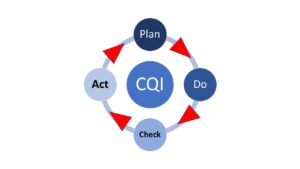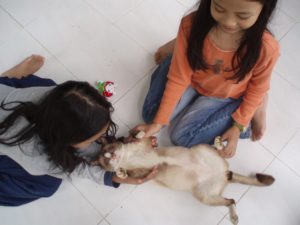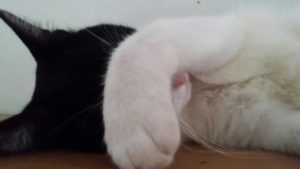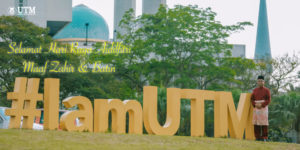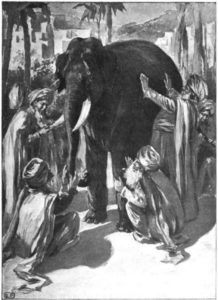A teacher? Or a hero?
I have been thinking about this long time ago since I was doing my masters at IIUM. I had a chance to be supervised by a great mentor who teaches me about value and ethics. I learn that from him. Taking several classes under his tutelage was a privilege that I will cherish for the rest of my life. I would email him quite regularly when I have qualms about my teaching practice. I would always get a straight-to-the-face kind of answer. No filter. Nothing. It always serves as a reminder why I am in this profession. He had retired now. No email. Just occasional Whatsapp message. But, it helps me to feel better when I am feeling blue.
Now, I am no longer have the privilege to email him like I used to do. He rarely checks his email. With a younger wife, he is pretty much preoccupied with his retirement life. So, I normally will find motivational videos about teaching. One of my favorites is a TED talk by Rita Pierson. She passed away not long after giving the TED talk. To know more about her, this is one of the articles written about why it is important for teachers to know their students better in order to make impact on their lives.
Overall view about UG students performance [Semester 2, 2018/19]
Alhamdulillah. I have finished marking all of the assignments and exam scripts. Now, it is time for me to prepare the report via OBE system. But before that, let’s jot down some of the points that I want to include as parts of my CQI in my OBE report.
Assignments: I had given my UG students two types of assignments: Individual and group assignment. For the individual assignment, they have to create a concept map for each topic discussed. To assist them, I suggest they submit it on weekly basis, not compulsory though. Majority submitted their concept maps religiously every week. Only a few of them NEVER did that, not even once.
As I graded their concept map assignment, I notice that one student did not submit his assignment. I also remember quite well that he never submitted any concept map before. When I look closely at his overall performance, he could not do well for individual tasks like final exam, quiz and such. This shows that he is struggling but he never told me anything when I asked them in class or never even once let me know through other means. He is the quiet type in class. When I did a jig saw activity in class, I notice that he is the “listener” type. When he was urged by his friends to give his opinion, he did not elaborate in detailed, rather give short explanation. But, it does not explain why he failed to submit the concept maps. After all, I told them that to be self-regulated learners, they need to have certain routines. To create a concept map means that they need to understand the overall concepts (and its interconnectivity). It is not an easy process. After getting my feedback, they could improve their concept maps which many did so and it can be exemplified by the marks they got. Doing all these would involve them to engage in all of the process of three different phases based on self-regulated model as proposed by Zimmerman.
On the exam day itself, I told them (via Whatsapp) to double check whether they have done their second quiz on the elearning and those who did not submit their concept map after the exam can do so by going to my office on the next day to submit their concept maps. I did remind them about the course work even during exam period. Now, the exam period has ended, so it is kind of pointless for me to bug them during their holiday about the course work.
For the group work, there are no glitches that I was not aware of. Alhamdulillah, the students were proactive to meet me and discuss about their group assignment. So, all of the groups did well. They are also reflective about the things that they observe at schools. Some groups did interview. During the presentation day, one of the guys (Yusri) wore full attire with a coat. I gave a special mark for this because he makes the attempt to be presentable. The only person who did so.
Final examinations: There are two types of exam questions given (MCQ and short answer questions) for 40 marks. Even though it is stated the marks would be 60%, but we convert it into 40% later on. I find that some students could answer the short answer questions really well. Some of them got full marks. However, some of them did not able to answer one or two questions. Few even just “skipped” and didn’t answer one or two questions at all. So, they lost 10% right there and then. What a lost! But, it is their choice. I have no right to question their decision of leaving few questions unanswered. I should be emphatic in this case.
Overall: Some of the students did very well. They got more than 80% marks. Good job! Well done!
CQI: Based on student performance, I plan to revise my instruction for the both assignments. I think the current instruction is not being perceived as emphasising self-directed learning by some students. Based on the feedback that students gave on concept map assignment, some perceive it does help them to study or revise. In this case, they perceive it as a burden despite the evidences i.e. journal of concept map research that I show them [I suspect that they do not read the journal articles that I shared in elearning]. But, majority perceive that concept map is useful, so I will retain this activity in future.
I am a cat lover
This cat was not mine. I came back from school one day and there she was sitting in front of the door of my house (60 Steavenson Street, Durham). I asked my housemate to take my picture with this cat. I didn’t own any cat when I was in Durham. I couldn’t afford to take care of a cat because the food and whatsnot are not cheap in UK. A small packet of wet food could cost a pound (I could buy a packet of biscuit with the same amount).
These two cats stay in my school’s compound. Mother and daughter. I just parked my car and haven’t get out yet from my car and both were already waiting for me. When this thing happens, it always makes my day!
I met this tyke few years ago at Pagoh’s RnR. I was on my way back from Putrajaya. It was one long exhaustive week for me and I had no appetite to have dinner. While waiting for the rest of my busmates, I stood nearby the parking area and suddenly, this little tyke started to rub on my leg. What a big boy! I just patted the head. Not giving him the whole body massage (I was afraid of him to bite me, actually. So, better takes extra precaution on this). I still remember my feeling after patting him. What a good (and cheap) stress reliever!
I had this cat for about five years. He was called as “Merah” (Red). He did not like any sort of physical affection unless he initiated it. But normally, he would only allow me to pat on his head ONLY. When the picture was taken, he and Hadif (my three years old nephew) were eating durian together. As you can see from the picture, they had a little argument. Who should get the last piece of durian! How time flies! Merah was no longer with us. He died in late 2009 (not long after this picture was taken). That boy? He is 13 years old this year (2019) but he no longer likes durian. He could not even stand the smell. Welcome to non-eating durian club, Hadif! (I also don’t eat and cannot stand the smell of durian even though there are around 10 durian trees around my house that my late dad grew more than 30 years ago).
This is Bubu (Kelabu or Grey). He died in 2008 when I was in UK. He liked to sit on top of my car. He liked to be held like that. My two nieces, Halimah and Adibah were holding him in that position. It is a bit uncensored though. Please pardon me of that. I would not photoshop this picture. I leave it au naturale.
This is my current princess, Robyn. I had a little scary moment when something went wrong when I spayed her in 2015. I spent more than RM1k for her medical treatment. I even brought her to the office because I needed to bring her to the doctor’s appointment at Global Pet (Taman Universiti branch). How time flies! She is such a darling and my little princess even though she could not stand to be held by me (I guess it is due to the traumatic experience of being held when she was sick when I needed to feed her with medication etc.). She is one of the most polite cats that I ever have because she would give me a little meow whenever she needs something from me (not the loud ear-piercing meow).
I call him, Batman. He is Robyn’s brother. He likes to sleep inside a box-shaped place like this. He has this piercing loud voice. He doesn’t like to be held like Robyn but I can still cuddle him for a few second. I make it as a routine before I give him his meal. As he grows older, he does not like strangers. Normally, he would stay away from strangers. [Latest update: he went missing on 4th day of Eid. The last time I saw him was on Saturday afternoon. I gave him his last meal around 6pm. He was not around on Sunday morning. He is still missing until now]
Formative assessment: Students take charge of their learning
For this semester, I tried using the quiz on the elearning. So, I learned a bit about it by myself (googled the handouts and figured out how to do it through trial and error). I tried it on different courses.
I find that the quiz on elearning is easier to use like Quizziz or Kahoot!. But unlike Quizziz, the quiz on elearning can be set for longer duration. For Quizziz, I only can set the duration up to 2 weeks.
So, for UG SPPP 1012, I set my 2nd quiz using the elearning. I let the students to take the quiz as many times as they wish (multiple attempts). Meaning, they can take the quiz several times as they want until they get the highest marks (5 marks). I notice that many students use this opportunity to improve their grades. Well, this is an example of formative assessment in which students can regulate their own learning. Of course, I did not let them see the answer but they can get a feedback if they answer it inaccurately. So, in this case, they know if they have answered a question right or wrong.
But, I find that some students didn’t even bother to try out the quiz more than once to improve their grades. I trust their judgment in this. There was one student who did not take the second quiz. I have reminded them in class and through Whatsapp group. But, apparently something is amiss in which he did not take the quiz. I did remind them to let me know if they have anything to discuss but only some of them did so. They would either leave a message on my elearning or through Whatsapp. I could not help from thinking why this student acted this way.
Is he struggling? When I looked at his final examination, he did ok (22/40 – average marks). I haven’t finalised their marks yet because I am still marking one assignment – concept map. But, using simulation, he will get passing grade (60+/- over 100). That could be B-. Well, if that what he wants, what else can I do? After all, I have given them chances to improve their performance. Nothing else matters.
UTM Vice-Chancellor’s Eid Address 1440H
Assalamualaikum warahmatullahi Wabarakatuh
Allahu Akbar, Allahu Akbar, Allahu Akbar.
Let us extend our utmost gratitude to Allah Ta’ala for His countless blessings and love aplenty, we once again have the opportunity to celebrate Eid ul-Fitr 1440H in a peaceful and tranquil environment in this blessed land – Malaysia, Alhamdulillah.
Throughout the month of Ramadan, we restrain our lust, hunger and thirst, to train ourselves to be more patient, to understand the nature of life and to consistently carry out charitable deeds. Hopefully, we can continue istiqamah to get His blessing.
In conjunction with this Eid, let us together make this glorious month of Shawal as a time for us to clarify all the disputes and wrongdoings we have done so far. Strengthen our friendship and brotherhood regardless of religion and ethnic groups because with camaraderie and unity, we are able to drive UTM to face all the challenges easily and excellently.
During this Ramadan, there are a few UTM students who have been invited as imam in mosques in UTM neighbourhood to lead the tarawih prayers. This is an example of how UTM as an educational institution produces excellent human capital who are not only brilliant in technical aspects but also from spiritual aspects. This directly proves that the student development program has a positive impact not only on the students itself but also on the surrounding community.
To all UTM community who are travelling home, plan your trip wisely. For those who drive, keep the ethics, always be vigilant and obey the traffic rules on the road. Celebrate this Eid ul-Fitr, with family and appreciate the quality moment together. Do come back with renewed spirit to keep UTM moving forward.
In closing, my family and I would like to take this opportunity to seek forgiveness from all staff, students and the entire UTM community for any shortcomings and wrongdoings.
It’s time to draw the curtain on Ramadhan
Now it’s turn for Syawal celebration
Eid Mubarak I wish to everyone
I seek forgiveness for any wrongdoings of mineBe happy and enjoy the Eid celebration
Visiting each other is a tradition
Be careful the whole duration
May you arrive safely at your destination
Eid Mubarak, Maaf Zahir Batin.Wahid bin Omar
Vice Chancellor
What are the differences between Classical conditioning and Operant conditioning?
There are many differences between classical and operant conditioning. The differences can make students confused if they are not critical enough to differentiate the differences.
One thing that I notice that majority of the students heavily relied on my notes (which for obvious reasons are compressed and simplified and thus, I only cover the basic things but they need to find our more on their own to understand better the concepts) and if they do not find additional information from the internet or their own reading textbook(s) and include that as a part of their notes, it would lead to surface understanding. This could be exemplified by their answer/response on the question that asked them to do a little bit of analysis/synthesis of several examples of classical and operant conditioning.
As an example, one question asked about an example of classical conditioning. So, there are four examples given and students need to identify which one is the correct example of classical conditioning. It is kind of straight forward question, isn’t it? But apparently, many students failed to get the correct answer.
Example 1: Rashid can watch the television for two hours when he finishes his homework.
Example 2: A teacher praised Kumar for writing a great essay and due to this, he works even harder when writing essays.
Example 3: Sam was scolded by his father when he failed in his science test and this makes him gets really nervous every time he takes a test.
Example 4: Lee was scolded by his teacher for passing notes to his friend in history class, but it does not stop him from passing notes in other classes.
Which of the above is an example of classical conditioning?
Let’s do an analysis and synthesis of all the examples given.
Example 1. A positive stimulus is given/presented (e.g. watching TV) after a completion of a desirable behaviour/task (e.g. complete homework). So, it is an example of operant conditioning (in specific positive reinforcement)
Example 2. A positive stimulus is given/presented (e.g. praise by a teacher) after a completion of a desirable behaviour/task (e.g. writing a good essay). The desirable behaviour would be reinforced/ increased (i.e. writing good essays) due to the positive stimulus (i.e. praise). So, it is an example of operant conditioning (in specific positive reinforcement)
Example 3: An involuntary or reflexive behavior/response is expressed/displayed (e.g. feeling nervous) after an association with negative/aversive stimuli (e.g. get scolded after getting bad results of a test). There is an association between feeling nervous (involuntary response) with scolding + bad results + test (operant conditioning does not have this association). So, it is an example of classical conditioning because the main thing is it involves natural response i.e. biological or physiological and involuntary response. You cannot control your heart beat if you are scared, don’t you? Operant conditioning does not involved biological changes i.e. response.
Example 4: This is an example that learning does not occur according to operant conditioning principle. Why? There is no change of behaviour. After getting scolded by his teacher for passing notes to his friend in history class, but it does not stop Lee from passing notes in other classes. In this case, does Lee learn something from getting scolded in history class? NOPE.
Look at the definition of learning based on operant conditioning principle: learning in which the organism studies the relation between responses and its consequences.
But, if you do a deeper analysis of the scenario using social learning theory principle, you will understand further that learning has occurred for Lee in which he learns through enactive learning that since he was scolded by a teacher in history class (i.e. his own experience), he will get scolded if he continues to pass notes in history class but this does not mean that he will stop to pass notes in another class. Why? One of the possible reasons is he still continues to pass notes in different classes because perhaps he was never scolded by teachers in another classes. For social learning theory, there are some elements of classical and operant conditioning. For example, the elements of generalisation and discrimination (classical conditioning principle). Lee learns to discriminate his action i.e. passing notes in different situations. At the same time, there is also an element of operant conditioning which is decrease of undesirable behavior (i.e. Lee does not pass note in history class) after he gets scolded by a history teacher (i.e. aversive stimuli).
So, for example 4, there is no way the example is accurate for classical conditioning.
Why do the behaviorist and social learning theories are different?
Well, it belongs to different school of thoughts in psychology and thus, the theories emphasise and hypothesise a scenario differently. This means that different theories explain a scenario differently from one another. Why is that? Let’s find the answer from the following picture. Just imagine each person represents one theory. Each person is describing one part of the elephant. Capisc? So, as we learn all the theories related to learning (even though there are many of them), we need to appreciate and understand all of the theories to understand a scenario better. Imagine you collect the information from all of the people who have touch the elephant rather than from one or two persons? You will get more comprehensive view of the elephant, right? Attaboy!
That’s why don’t undermine any of the theory that many psychologists have come out with. It is not easy for them to propose a theory and for such theory to “survive” until now. Perhaps this is what we called in Islam “beneficial knowledge – ilmu yang bermanfaat” that is passed down from one generation to another? Indeed.
P.S: I wonder what go wrong with the minds of the millenials. It seems that some of them need to work on their ability to think critically to analyse and synthesise educational scenarios. Arghh….. it does resonate with the Zimmerman’s self-regulation model. Yup. Some of them are not self-regulated learners.
Marcia’s Identity Status
As I looked at the students’ response on a question related to this concept [Marcia’s Identity Status], I could not help from thinking why so many students did not able to answer the question accurately. The application question is straight forward.
Question: After getting his SPM results, Rahim has surveyed several undergraduate programmes at various universities that suit with his interest and SPM results. However, he has not decided to apply to any matriculation centre yet. This example shows that Rahim’s identity status is
A. identity diffusion
B. identity foreclosure
C. identity moratorium
D. identity achievement
Many students answered B [identity foreclosure] – wrong answer!
For Marcia’s Identity Status, there are four types of statuses based on four types of matrices between exploration and commitment.
1. identity diffusion = No exploration, No commitment.
2. identity foreclosure = No exploration, Have commitment.
3. identity moratorium = Have exploration, No commitment.
4. identity achievement = Have exploration and commitment.
Analysis of Question:
After getting his SPM results, Rahim has surveyed [Have exploration] several undergraduate programmes at various universities that suit with his interest and SPM results. However, he has not decided [No commitment] to apply to any matriculation centre yet.
So, the answer is C. identity moratorium
If we change the scenario into the following:
Scenario A
After getting his SPM results, Rahim has not surveyed [No exploration] several undergraduate programmes at various universities that suit with his interest and SPM results. However, he has decided [Have commitment] to apply to University Malaya Foundation Programme based on his parents’ suggestion to follow his siblings footstep who had enrolled in the same programme.
Rahim’s identity status is identity foreclosure
Scenario B
After getting his SPM results, Rahim has surveyed [Have exploration] several undergraduate programmes at various universities that suit with his interest and SPM results. However, he has decided [Have commitment] to apply to University Malaya Foundation Programme because he believes that he has better chance to further his study at University Malaya later on.
Rahim’s identity status is identity achievement
Scenario C
After getting his SPM results, Rahim could not be bothered to search for information related to any programme available at various institutions [No exploration] that suit with his interest and SPM results. In addition, he has not decided yet [No commitment] to apply to any matriculation centre.
Rahim’s identity status is identity diffusion
It is kind of straight forward scenario, isn’t it?
The next question is, as a teacher how can you help the students who do not reach identity achievement yet?
It has been a while since the last time I watched a movie
Since 2011, I never watch any movie at cinema. I only watch movies at home which means that whatever movie that I watch will be the “off season” movie. I don’t feel like I miss out anything from not watching the latest movies. Reading any movie review is good enough for me.
But, things are different for my nieces. Apparently, one of them subscribes Netflix and thus, she is quite up-to-date with the latest movies and whatsnot.
Here I was, watching a scary movie called “The curse of La Llorona” on second Eid with the rest of the family. With small kids as young as 2 years old who have started to know “the meaning” of ghosts and whatsnot, my home was loud with screaming and shrieking of all ages. The oldest person who also watched the movie was my eldest sister. After a while, she went to her room to have a quick rest. After all, too much screaming and shrieking tired her out.
I didn’t even finish watching the movie. It is too much actions going on and I just feel too tired to be guarded at all times. It is not worth to watch something to scare myself, don’t you think so? 😀
P.S: The kids who watched the movie ended up sleeping with their parents at night because they were too scared to sleep without their parents.
Allah Knows best
Some of my colleagues and I had a chance to collaborate with several researchers from different universities. This was my first opportunity to work with outsiders.
Unfortunately, I received the news that our collaboration might not be materialised. Our grant proposal was rejected. Our leader was apologetic about it. Well, there is nothing to apologise. We had a chance to discuss and meet at UM last June (2 weeks before Ramadan). This was a new thing for me.
I am glad that I have such opportunity to meet with other researchers from different universities with different specialisation. In sha Allah we will have a better chance to conduct research together. After all, Allah Knows the best gladtidings for us and will always give the best things at the best time.



